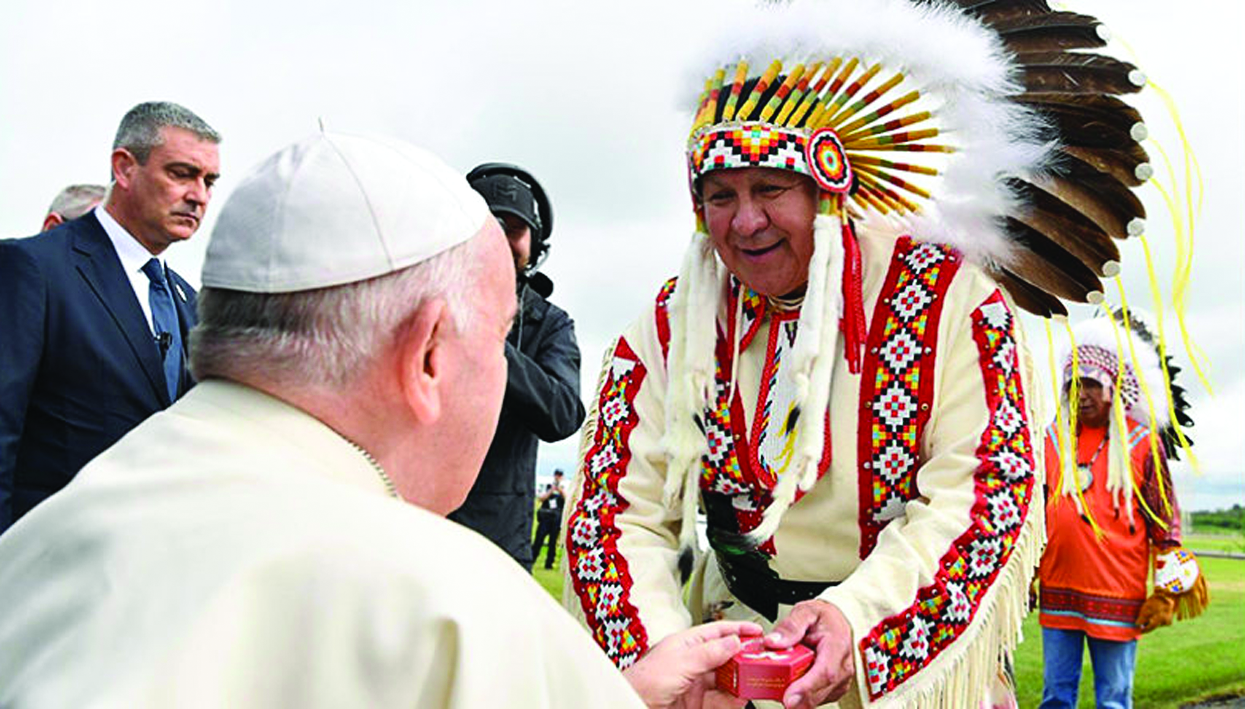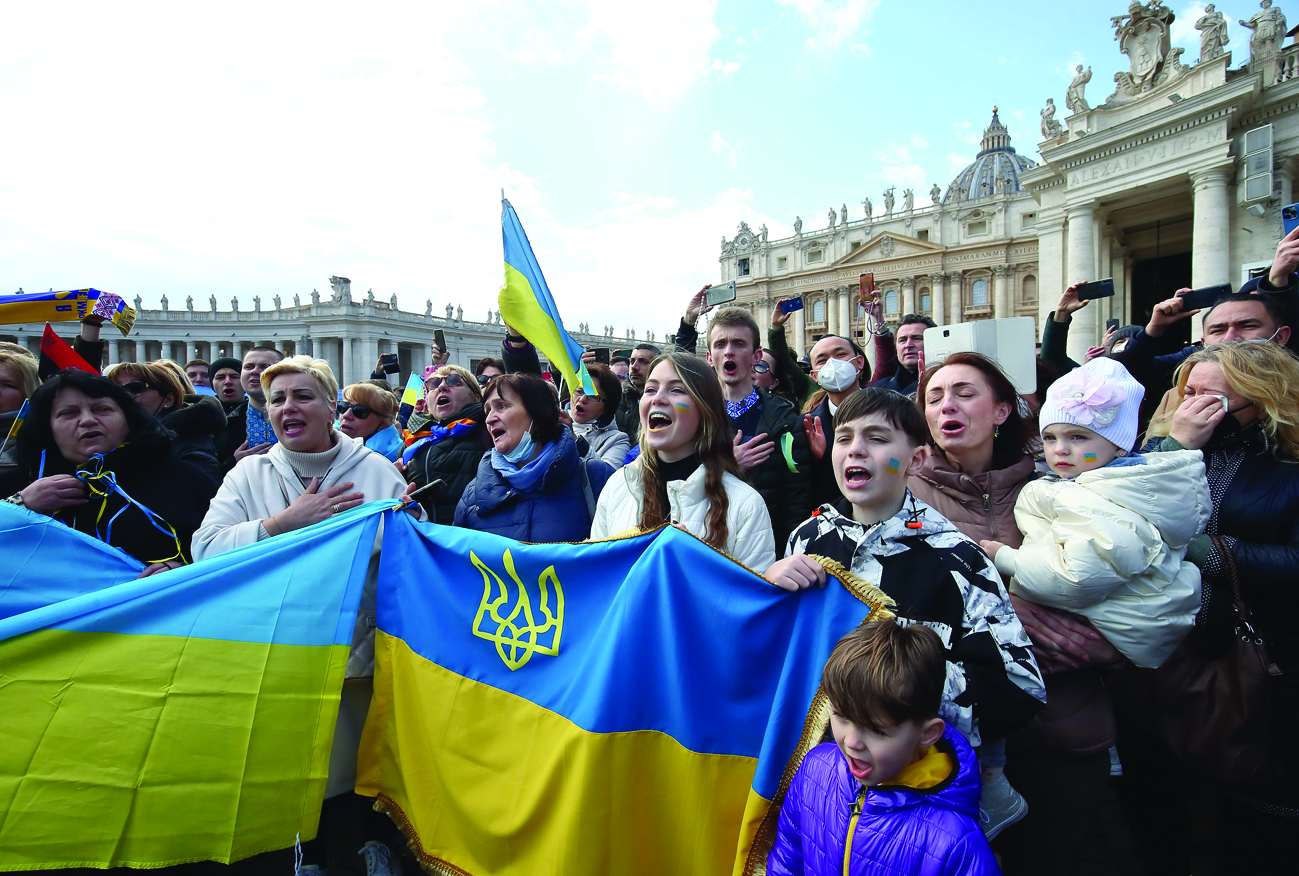A commission set up by the Vatican to study the alleged apparitions at Medjugorje in Bosnia has completed its work and handed in its report. Next: a decision…
Granting Medjugorje the status of an approved Catholic shrine is among the recommendations that the Vatican Commmission on Medjugorje handed over to the Congregation for the Doctrine of the Faith (CDF) on January 17, Cardinal Vinko Puljic of Sarajevo told the Croatian news portal Dnevnik.
Cardinal Puljic, a member of the international investigative Commission since it was formed in 2010, says that a “verdict” from Pope Francis on the case of Medjugorje can be expected later this year.

The Medjuogroje Commission was initiated by Pope Benedict XVI almost four years ago, on March 17, 2010. He entrusted the work to Cardinal Camilio Ruini (in the foreground).
“The Commission has submitted the results of our work to the Congregation for the Doctrine of the Faith,” Puljic said. “We worked on this for four years as an international Commission. The Congregation will consider our findings and make a proposal to the Pope, and then the Pope will decide how to handle it. This year we can expect the final word from the Holy Father.” The cardinal said pilgrims are still free to visit Medjugorje, upholding what has been the status quo since the bishops of then-Yugoslavia decided to allow visits in April 1991.
“The Commission is not opposed to Medjugorje as a place of faith where faithful pilgrims gather,” Cardinal Puljic said.
The Medjugorje inquiry commission was set up in March 2010 under the direction of an Italian cardinal, Camillo Ruini, who for many years was the vicar of Pope John Paul II for the city of Rome. Fr. Federico Lombardi in mid-January confirmed that the commission had held its last meeting and the results of the inquiry would now be examined by the Congregation for the Doctrine of the Faith under Prefect Archbishop Gerhard Müller.
The material includes interviews with the six seers and other witnesses, expert reports, and theological reflections on the messages. The report will now be studied alongside other documentation the Congregation has gathered over the course of the years.
According to Vatican Insider, the Commission focused on the first phase of apparitions to determine if there was evidence of any tricks, hoaxes or abuse of popular credulity. No such evidence was found.
However, it is proving difficult for the Church to form a definitive verdict on the supernatural nature of a phenomenon that is still ongoing.
Of the six seers who reported apparitions in June 1981, when they were still children or in their teens, three claim that they still see daily apparitions of the “Queen of Peace” at the same time every afternoon, wherever they happen to be. These seers are: Vicka (who lives in Medjugorje), Marija (who lives in Monza, Italy) and Ivan (who lives in the US but returns to his homeland often). A fourth seer, Mirjana, sees an apparition on the second day of each month.
The large volume of messages based on these visions also poses a problem for the Commission.
Another problem involves a number of “supernatural signs and secrets” the seers have refused to share — even with Church authorities.
Reportedly, the Commission’s members have highlighted the need to provide more pastoral care for the millions of faithful who come to Medjugorje from all over the world. The Commission members, and Cardinal Ruini himself, are said to have concluded that people who visit Medjugorje really are converting to the faith or returning to the sacraments in a significant way.
But this alone does not mean that the apparitions have a supernatural origin.
In fact, in recent months, Prefect Müller has cautioned bishops in the US to keep a close eye on meetings held by Medjugorje seers in which “apparitions are on the agenda.”
During Mass on November 13 in the Domus Sanctae Marthae, Pope Francis very eloquently said that Mary is a Mother, “not a postmaster of the post office sending out messages every day.” It seemed clear that he was speaking to those who continuously seek and communicate “messages” about the future.

The tense relations between the diocesan clergy and the Franciscan friars in Herzegovina (in charge of the parish in Melongrower where the apparitions began) is another part of this complex problem.
A proposed solution is to restore the old diocese of Trebinje, removing Medjugorje from the territory of the Mostar diocese.
Another solution is to create a Marian shrine that would be managed by a rector from another diocese.
Reportedly, the findings of the Vatican Commission on Medjugorje allow for favorable judgment, but only in a partial form, since the apparitions are ongoing.
The Commission found real and significant fruits in the form of conversions, and no evidence of fraud, deception or abuse.
So, in this sense, Medjugorje received a favorable review in the final report handed over to the Congregation for the Doctrine of the Faith.
Medjugorje is far from unknown to Pope Francis.
As archbishop of Buenos Aires, Pope Francis opened his diocese to Medjugorje priests, and asked Fr. Jozo Zovko to bless him.
And shortly before he left for the papal conclave in Rome, he approved of visionary Ivan Dragicevic’s public apparition arrangements that drew 10,000 people.
In the recent newsletter of the organization Children of Medjugorje, Sr. Emmanuel Maillard summarizes three occasions when the new Pope, as archbishop of Buenos Aires, approved of public talks from prominent Medjugorje visitors in his diocese.
“He welcomed Fr. Jozo Zovko while on his mission in Argentina. He welcomed Fr. Danko last year (in 2012), for his mission through Argentina. And Cardinal Bergoglio allowed (visionary) Ivan to spread his witness in Buenos Aires early this March. Only a few days before leaving for Rome to join the conclave, Cardinal Jorge Bergoglio gave his approval for Ivan to receive the apparition at Luna Park,” Sr. Emmanuel writes.
Ivan visited the Malvinas Microstadium where he drew about 5,500 people on March 4, a slightly higher number than at Luna Park two days later.
Fr. Jozo Zovko, parish priest in Medjugorje when the apparitions began, tells the Croatian newspaper Slobodna Dalmacija that he spent a long time with then-Archbishop Bergoglio during his visit to Argentina in the late 1990s.
“We spent a long time together and talked about everything in Buenos Aires,” he said. “And he was interested. We prayed together and at the end he asked me for a blessing. I touched one fine and good man. He is a good choice for a Church that is getting better, and there is no better person than Francis to rebuild the Church. Pope Francis’ gift to the Church is a fruit of the grace at this time. He dares to talk about our failures.
“He called for prayer, and his first move (as Pope) was going to Our Lady with a bouquet of flowers. There is a man who, like Mary at Cana, sees and feels and knows where to go.
“We need such people deeply rooted in prayer. He holds a Rosary in his hand, and draws on the Gospel. It is the key that opens all closed doors, and the Pope is showing us the way.”
Medjugorje is a town in Herzegovina where, in 1981, a group of young people began reporting daily visions of the Virgin Mary.
On November 14, Pope Francis seemed to refer to Medjugorje in his morning homily. (By the Pope’s own request, the full texts of these homilies are not published, only summaries of them. This means that we need to be somewhat cautious when interpreting them, because we do not have the full remarks.)
The Pope didn’t say anything about Medjugorje explicitly. According to Vatican Radio, Pope Francis was cautioning people against excessive curiosity about the future and contrasting it with the wisdom that comes from the Holy Spirit: “Curiosity,” the Pope said, “impels us to want to feel that the Lord is here or rather there, or leads us to say: ‘But I know a visionary, who receives letters from Our Lady, messages from Our Lady.’ And the Pope commented: “But, look, Our Lady is the Mother of everyone! And she loves all of us. She is not a postmaster, sending messages every day.” Such responses to these situations, he affirmed, “distance us from the Gospel, from the Holy Spirit, from peace and wisdom, from the glory of God, from the beauty of God. Jesus says that the Kingdom of God does not come in a way that attracts attention: it comes by wisdom.”
Since several of the Medjugorje seers say they still receive revelations daily, it is thought the Pope’s comment that Mary “is not a postmaster, sending messages every day” may have referred to them.









Facebook Comments